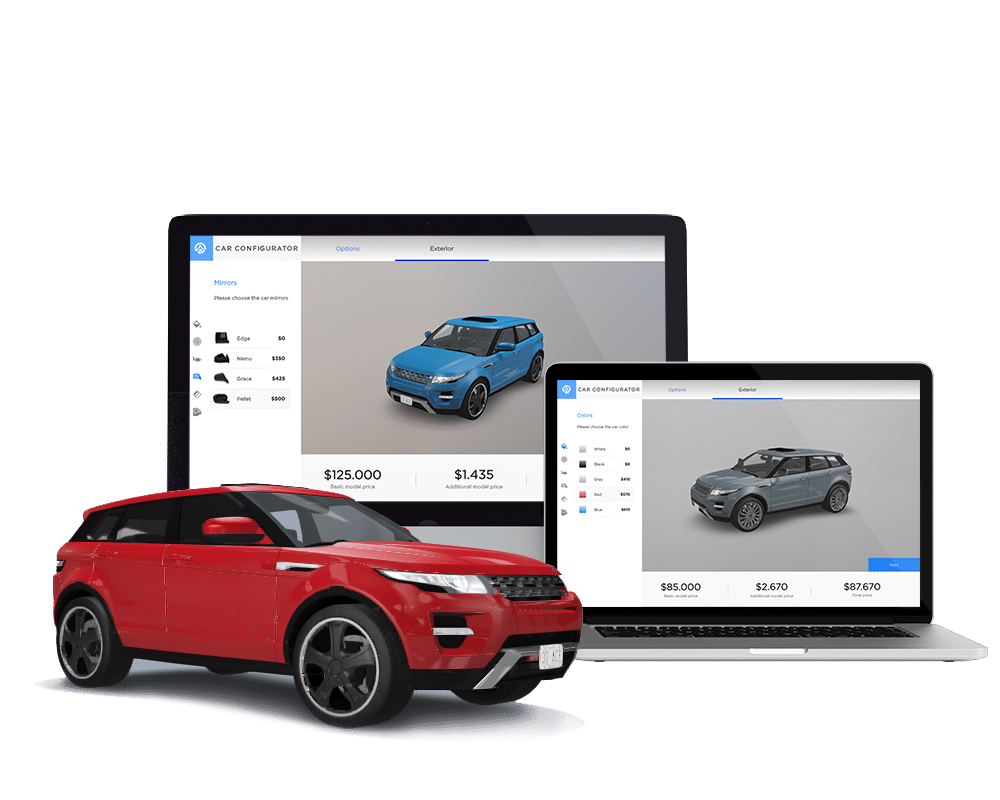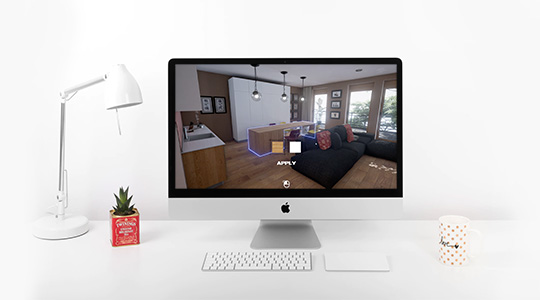Throughout history, numerous concepts have remained dormant, only to re-emerge with newfound vigor and relevance in later years. A notable comparison can be made to Leonardo Da Vinci's conceptualization of a helicopter, an invention that took centuries to come to fruition. Similarly, the idea of product configurators is not a novel one, having existed for several decades. However, their popularity has recently experienced a significant uptick. The evolution of these tools into custom configurator platforms and their integration into enterprise-level solutions has sparked interest among numerous startups and established companies eager to explore this burgeoning trend.
For businesses considering integrating a configurator to enhance their offerings, understanding the investment and resources required for its development is paramount. Moreover, grasping the underlying technology that powers these tools is crucial. With experience building custom product configurator software, we can provide our expertise in creating and deploying 3D product configurator tools for your business. We offer comprehensive insights into the development process, including cost estimation, required technological stack, and key features that drive the functionality of a 3D configurator.
The 3D product configurator, a specific type of configurator software, represents a dynamic leap forward in how products are presented and customized online. By allowing customers to visualize and modify products in a three-dimensional space, these tools not only enhance the user experience but also significantly contribute to the personalization of products. The capabilities of 3D configurator software extend beyond mere visual appeal, incorporating complex algorithms and data handling to ensure that each customization option is viable and accurately represented.
Given the competitive edge that a 3D configurator can provide, it is unsurprising that interest in this technology has surged. The ability to offer customers a hands-on, interactive experience with a product before purchase dramatically increases engagement and satisfaction. For companies seeking to adopt this technology, selecting a software provider with a proven track record in developing reliable, high-quality 3D configurator solutions is crucial.
What Is a 3D Product Configurator?
A 3D product configurator allows customers to view and customize products in a three-dimensional space through a digital interface. This tool significantly enhances the online shopping journey by providing a dynamic and interactive user experience. The technology behind a 3D configurator encompasses advanced software programming, 3D modeling, and real-time rendering capabilities, ensuring that the product's modifications are visualized instantly and accurately.
- Functionality. At its core, the 3D product configurator software enables users to personalize various aspects of a product according to their preferences. From changing colors to adjusting components, the software offers a comprehensive suite of customization options.
- Engagement. Utilizing a 3D configurator increases customer engagement by offering an immersive, interactive experience. Users can explore every angle and feature of the product, thereby reducing uncertainties and elevating confidence in their purchase decision.
- Accuracy. The precision of a 3D configurator ensures that each customization option is presented realistically, providing customers with a clear expectation of the final product. This accuracy minimizes the gap between digital exploration and the physical product, enhancing customer satisfaction.
- Integration. Seamless integration with online platforms makes the 3D product configurator an essential component of modern e-commerce websites. By embedding the configurator directly into product pages, businesses can offer an enriched shopping experience without navigating away from the site.
- Innovation. A 3D product configurator represents a significant advancement in e-commerce technology. By adopting 3D configurator software, businesses position themselves at the forefront of digital retail, offering cutting-edge solutions that cater to the evolving demands of consumers.
In summary, a 3D product configurator transforms the traditional online shopping experience into an engaging, personalized journey. By leveraging 3D configurator software, businesses can present their products in a dynamic, interactive format, empowering customers to tailor their choices precisely to their liking. As the demand for customized products continues to rise, the importance of integrating a robust 3D configurator into e-commerce platforms becomes increasingly evident.
What Exactly Does a 3D Product Configurator Do?

A 3D product configurator represents an advanced software solution, enabling users to explore and modify a product in numerous variations by interacting with a range of selectable options. By utilizing this configurator, individuals can see real-time changes in a three-dimensional model of the product as they apply different customizations. For instance, when considering a configurator designed for a couch, it grants the user the flexibility to alter the couch's color, material, dimensions, and additional functionalities. Following these modifications, the user can either order the personalized couch or utilize the newly designed version for other purposes.
By integrating a 3D configurator into their digital platform, businesses offer customers a more immersive and interactive shopping experience. This tool simplifies the customization process and enhances the customer's ability to visualize their choices in a realistic setting. Implementing 3D configurator software is particularly beneficial for products that offer a wide range of customization options, as it helps in accurately conveying the final appearance and features of the product post-customization.
Moreover, the application of a 3D product configurator can significantly impact the decision-making process of potential buyers. By providing a tangible representation of their customized product, customers are more informed and confident in their purchasing decisions. This level of interactivity and visualization was once a challenging feat but is now achievable through the sophisticated capabilities of modern 3D configurator software.
In essence, the introduction of a 3D product configurator into the e-commerce space marks a pivotal advancement in how products are presented and personalized online. This software not only elevates the user experience by offering a hands-on approach to product customization but also empowers businesses to showcase their products in dynamic, customizable formats. As a result, the 3D configurator becomes an invaluable asset for both consumers and companies, bridging the gap between digital product visualization and tangible customization options.
What is Product Configuration Software Used for?
First and foremost, 3D configurator and product visualization software is associated with the sales process. This makes sense, as it is the most visible example that we encounter and the one companies choose most for their business (one study put the ratio at 60%). Adding to this, the benefits of product configurators are not trivial. However, there are a few other uses that can help your company both with external and internal processes:
eCommerce product configuration
Product configuration for prototyping & development
Product configurator for support
B2B sales product configurator
Product configuration for presentations and ads
Enterprise training configurator

3D product configurators in eCommerce become part of the sales process and personalize the shopping experience for customers. It is usually integrated into the product page or a product category page, depending on whether it features one product or a whole catalog of items. After selecting their customization, users are normally afforded the option to place an order.

One of the ways that companies engage customizers for internal purposes is as a development and prototyping tool. It can help them settle on a final design for a product and work out how it can function before building a full physical model. It may even be used as a digital twin to visualize performance indicators and test changes.

We focus a lot on the visual side of configurators, but shouldn’t forget that they are also a valuable source of information. Many are designed with helpful text descriptions for all customizations, and the overall information about this version of the product. Thus, many potential questions that come up during the shopping/order process can be addressed in the online 3D product configurator before they even come up.

As you probably know, many goods are impossible to produce without certain parts or components built by the partner of a company. There is rarely a consumer market for these specialty parts and machinery, so suppliers can easily use configurators to market their goods to other companies. For example, producers of tractor engines might use a web 3D product configurator to let customers measure how much space it will take up under the hood of their tractor, how much fuel it will consume, etc.

Customizers provide a smooth and totally unique way to showcase your product. Unlike traditional promotional videos, stills, or renders, this application will let you examine the item at your own pace, zoom and focus on the things that interest you, and pick unique combinations to match your personal style. In addition to this, footage of the configurator can easily be turned into animations and ads.

Sometimes, customizers are wrapped into a larger enterprise program — such as a training manual or simulation. When using the software, company employees can get better acquainted with how the item looks and works, as well as which variations the company sells. Furthermore, it can be used by technicians to practice repair and maintenance operations in different circumstances.
Let's talk development: Why we recommend using Unity
The modern developer has dozens of amazing tools to choose for building software, each with its own strengths and weaknesses. However, when it comes to configurators, many favor Unity over alternatives like Xamarin and Cordova. Why is that?
We can outline 4 reasons why Unity is one of the best choices for 3D configurator development:
Accessible cross-platform development
Unity supports development for up to 17 different platforms, making it easy to reuse code and launch your app simultaneously on mobile, web, and desktop if you prefer. While porting with this platform is relatively easy, it will require some changes from one platform to the next, especially for AR product configurators.
Full immersive support
Many companies prefer to add an immersive aspect to their customization solution, either targeting mobile devices, WebAR, or even headsets with MR/VR experiences. Unity (like Unreal) has versatile built-in support for AR, VR, and MR development. Thus, you can easily use Unity or Unreal for VR configurators.
Plenty of helpful tools
In addition to immersive tools and SDK support, Unity makes it really easy for developers to get started, with a broad variety of guides, integrations & plugins, and even a proprietary Forma tool for configurators.
Favorable price
Unity has convenient and flat rates for using its services. Pricing plans start at Free for a version with limited features and go up to paid plans. The paid plans might be hefty to some, but are much thriftier for large projects than some alternatives (such as Unreal Engine).
Case Study – Unity Car Configurator

The Real-Time 3D Car Configurator built by Program-Ace is a wonderful example of a mid-scope solution suitable for business. We originally built this solution with PlayCanvas software, but eventually released a build with Unity and WebGL that we are quite happy with.
This application features a detail-rich 3D model of an SUV-type car, with plenty of menus on the top and left sides of the screen. The bottom of the app features information about the current configuration with the option to proceed with a purchase.
The project took several months to build, but ultimately provided users with dozens of great customization features and interactive options (like zoom, rotate, look inside). Though the configurator features a generic car model and is not yet integrated into any store, we consider it a successful prototype that we can draw experience from as we build custom solutions tailored to automobile brands and models.
How to Build a 3D Product Configurator – What It Takes
Now that we’ve covered the main tool you will be using during development (Unity, unless you choose another engine for development), it’s time to examine all the other things you will need for your project to kick off.
1. Top-notch modeling software
As the most impactful visual element, a lot of effort will go into the creation of a 3D model for your product. We suggest checking out tools like Maya, 3DS Max, Blender, and AutoCAD, and finding which of them suits your product category best.
2. Software development kits
SDKs will play an important role in delivering specific features to your application. For example, if you are developing a VR experience for Meta, you should download the relevant plugin for Unity. For MR development, the MRTK SDK is recommended, and many other players in the VR industry provide their own tools.
3. Experts
It is true that you can build a project with just one developer, but you will have much better and faster results with a whole team. For example, our previously-mentioned Car Configurator involved 4 specialists — one project manager, one developer, and 2 designers. It is also recommended to add a QA engineer for quality review. You will also need to equip your team with relevant hardware and software.
OR, you could just hire a partner!
With a capable partner like Program-Ace, you won’t need to hire IT specialists to work at your company full-time or spend months learning the peculiarities of development. As a software development service provider, we can quickly provide the specialists you need and get to work on building your custom configurator.
With years of experience, Program-Ace has built hundreds of software solutions, and configurators are certainly one of our strengths. You choose the platform, features, etc. and we will make sure that it happens. We will even be glad to add immersion/immersive elements to your application if you choose it.
To get started and discuss cooperation on your project, just send us a message.













